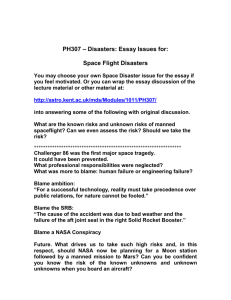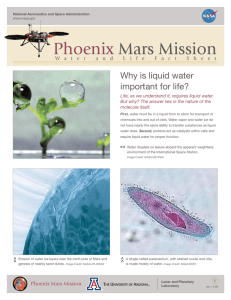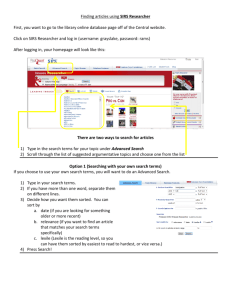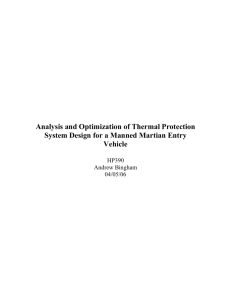File
advertisement
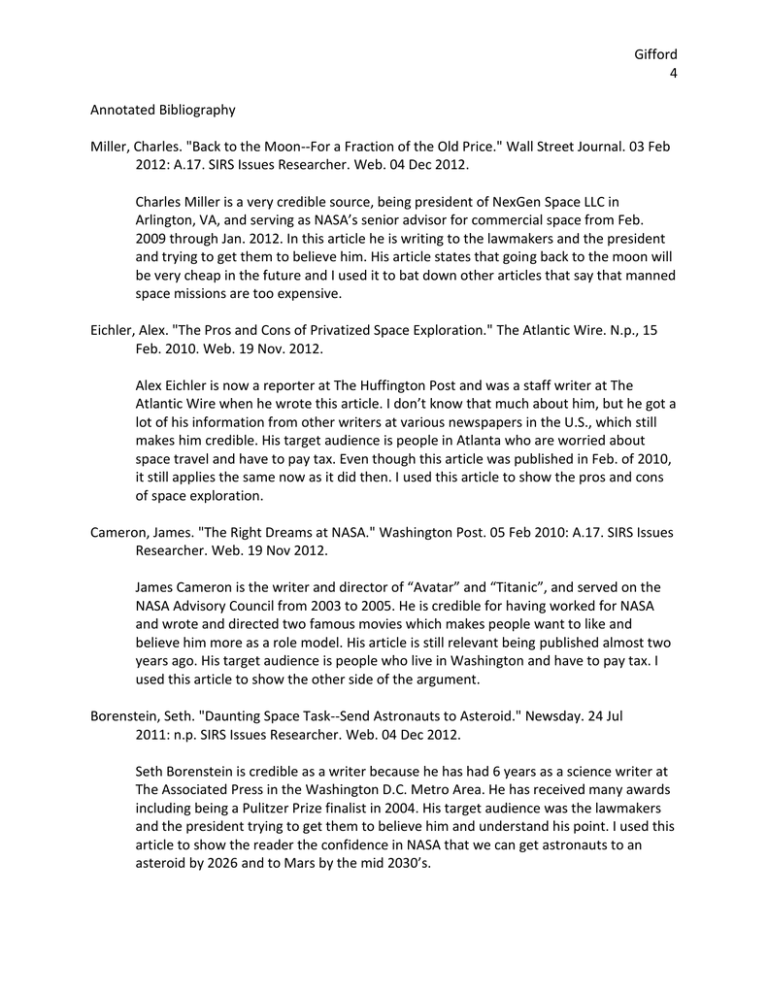
Gifford 4 Annotated Bibliography Miller, Charles. "Back to the Moon--For a Fraction of the Old Price." Wall Street Journal. 03 Feb 2012: A.17. SIRS Issues Researcher. Web. 04 Dec 2012. Charles Miller is a very credible source, being president of NexGen Space LLC in Arlington, VA, and serving as NASA’s senior advisor for commercial space from Feb. 2009 through Jan. 2012. In this article he is writing to the lawmakers and the president and trying to get them to believe him. His article states that going back to the moon will be very cheap in the future and I used it to bat down other articles that say that manned space missions are too expensive. Eichler, Alex. "The Pros and Cons of Privatized Space Exploration." The Atlantic Wire. N.p., 15 Feb. 2010. Web. 19 Nov. 2012. Alex Eichler is now a reporter at The Huffington Post and was a staff writer at The Atlantic Wire when he wrote this article. I don’t know that much about him, but he got a lot of his information from other writers at various newspapers in the U.S., which still makes him credible. His target audience is people in Atlanta who are worried about space travel and have to pay tax. Even though this article was published in Feb. of 2010, it still applies the same now as it did then. I used this article to show the pros and cons of space exploration. Cameron, James. "The Right Dreams at NASA." Washington Post. 05 Feb 2010: A.17. SIRS Issues Researcher. Web. 19 Nov 2012. James Cameron is the writer and director of “Avatar” and “Titanic”, and served on the NASA Advisory Council from 2003 to 2005. He is credible for having worked for NASA and wrote and directed two famous movies which makes people want to like and believe him more as a role model. His article is still relevant being published almost two years ago. His target audience is people who live in Washington and have to pay tax. I used this article to show the other side of the argument. Borenstein, Seth. "Daunting Space Task--Send Astronauts to Asteroid." Newsday. 24 Jul 2011: n.p. SIRS Issues Researcher. Web. 04 Dec 2012. Seth Borenstein is credible as a writer because he has had 6 years as a science writer at The Associated Press in the Washington D.C. Metro Area. He has received many awards including being a Pulitzer Prize finalist in 2004. His target audience was the lawmakers and the president trying to get them to believe him and understand his point. I used this article to show the reader the confidence in NASA that we can get astronauts to an asteroid by 2026 and to Mars by the mid 2030’s. Gifford 5 Docksai, Rick. "Down-to-Earth NASA." Futurist (Vol. 44, No. 4). Jul/Aug 2010: 9. SIRS Issues Researcher. Web. 04 Dec 2012. Rick Docksai is a Staff Editor at World Future Society. His target audience is the lawmakers and the president telling them to stop funding for manned space missions. This was written and published two years ago, and the president did what he said. He disagrees with funding for manned space missions because he believes that it is not worth the cost. I used a quote from his article to recognize his viewpoint and then shoot it down with the article by Charles Miller that says space travel will be cheaper than ever even imagined in the future. Kaufman, Marc. "Launch to Mark New Frontier for NASA." Washington Post. 02 May 2012: A.1. SIRS Issues Researcher. Web. 06 Dec 2012. Marc Kaufman is a writer at The Washington Post and a very credible writer. His target audience is lawmakers and the president trying to get them to believe him and change the law about funding for manned space missions. His article is about George W. Bush and Obama trying to get SpaceX to work to get astronauts to the moon and mars. His article is good saying to lower tax and still fund for manned space missions. Wall, Mike. "For Manned Deep-Space Missions, Radiation Is Biggest Hurdle: Scientific American." N.p., n.d. Web. 04 Jan. 2013. Mike Wall is a writer for Scientific American. His target audience was just middle aged guys who want to learn about whether or not we are going to try and send people to Mars or an Asteroid any time soon. His article is saying that the high radiation levels will be the toughest thing to get around but we can still get to an Asteroid by the year 2025 and to Mars by the year 2030. Millis, John P. "The Future of Manned Space Flight." About.com Space / Astronomy. N.p., n.d. Web. 04 Jan. 2013. John P. Millis is a former About.com Guide, and wrote an article for them. He has his PhD which makes him more credible. He is writing to middle aged guys who are interested in space. In this article it talks about how this is only the beginning of Space flight and how we can land on an asteroid and go to Mars in the near future. Brin, David. "The Near Future of Manned Spaceflight." The Near Future of Manned Spaceflight. N.p., n.d. Web. 04 Jan. 2013. David Brin works for NASA, so he knows what they are doing over there first hand. In his article he just talks about what NASA Is planning on doing and what they will do in the near future of manned space missions.
